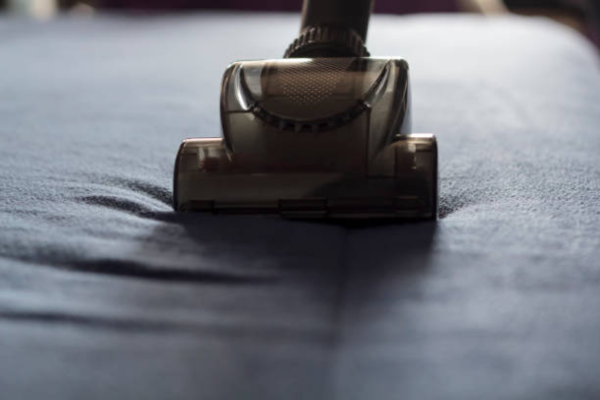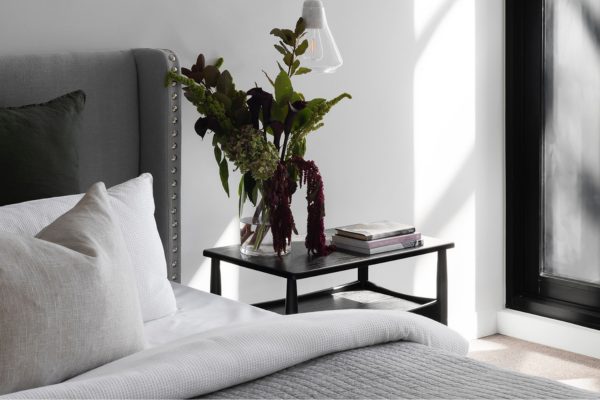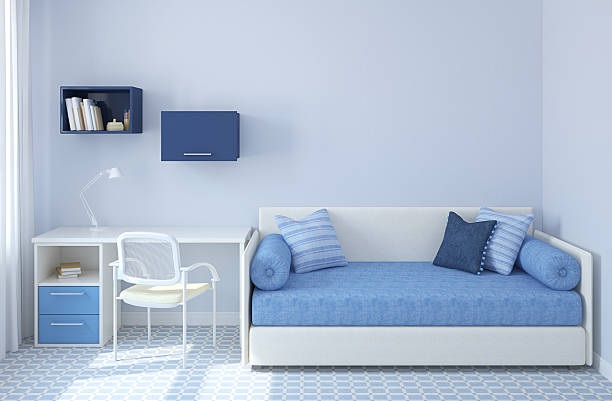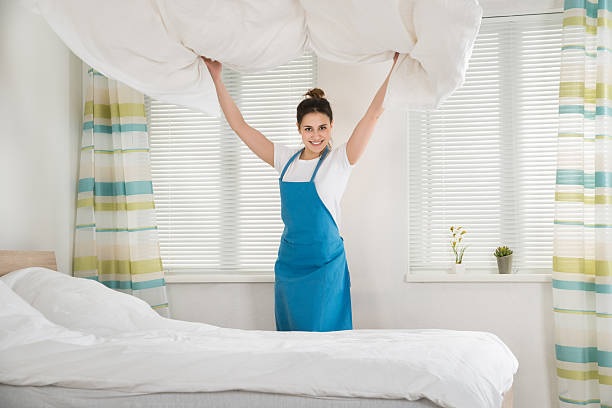Keeping your upholstered bed frame clean and fresh is easier than you might think. It’s not just about tackling the occasional coffee spill; it’s about ensuring your bed remains a cozy, welcoming haven day after day.
In this guide, we break down the cleaning process into simple, manageable steps. Whether you’re dealing with a stubborn stain or just looking to give your bed a regular refresh, we’ve got you covered with practical tips and expert advice.
Understanding Your Upholstered Bed’s Material

Before we dive into the nitty-gritty of cleaning, let’s pause for a moment to consider the heart of the matter – your bed frame’s upholstery material. Just like picking the best bed frame, choosing the right cleaning method depends on understanding the fabric your bed is dressed in.
- Synthetic Fabrics – Materials like polyester or nylon are common and relatively easy to clean. They’re durable and often resist stains better than their natural counterparts.
- Natural Fabrics – Think cotton, linen, or wool. These materials can be a bit more challenging to clean and might require gentler methods to avoid damage.
- Leather and Faux Leather – These bring a luxurious look but need specific care to maintain their elegance.
- Velvet and Silk – Delicate and luxurious, these fabrics call for extra gentle care and specific cleaning methods.
Identifying your bed’s material is crucial because each type has its own set of cleaning rules. Using the wrong method can lead to damage, and we certainly don’t want that! For instance, while a steam cleaner might work wonders on a polyester headboard, it could be disastrous for silk.
Regular Maintenance of Fabric Beds and Headboards

Photo by Andrii Borodai on istock
Let’s break down this maintenance into easy, actionable steps.
Spot Clean Any Stains
Life happens, and so do spills and stains. But there’s no need to panic. The key here is prompt action. As soon as you spot a stain:
- Blot, Don’t Rub: Gently blot the stain with a clean, dry cloth. Rubbing can push the stain deeper or spread it further.
- Choose the Right Cleaner: Depending on the fabric, you might need a specific cleaner. A mild dish soap solution often works well, but always do a patch test in an inconspicuous area first.
- Rinse and Dry: After treating the stain, dab it with a damp cloth to remove any soap residue, then dry with a clean towel.
Vacuum The Headboard
Dust and dirt are like uninvited guests—they tend to accumulate without you noticing. Regularly vacuuming your headboard is like keeping your welcome mat fresh and inviting. Use a brush or upholstery attachment to gently remove dust, hair, and other particles. This not only keeps your bed looking neat but also prevents allergens from building up.
Perform Light Cleans Weekly
Incorporate light cleaning into your weekly routine for lasting freshness. This doesn’t have to be a time-consuming chore:
- Wipe Down: For non-fabric headboards, a simple wipe with a damp cloth can work wonders.
- Fabric Refreshers: Lightly spritzing your fabric headboard with a fabric refresher can keep it smelling fresh.
- Rotate and Fluff Cushions: If your bed has cushions, give them a good fluff and rotate them regularly to maintain their shape and even wear.
Deep Cleaning Methods for Upholstered Beds

Photo by Andrei Zonenko on istock
Once in a while, your bed deserves a spa day, and that’s where deep cleaning comes in. This is about going beyond the regular cleaning of the surface to give your bed a thorough rejuvenation.
- Steam Cleaning: If your fabric allows it (always check the care label), steam cleaning can penetrate deeply and refresh the fabric.
- Use an Upholstery Shampoo: For a more hands-on approach, use a foam upholstery shampoo. Apply it as per the instructions, scrub gently, and then wipe off or vacuum up the residue.
- Baking Soda for Odor Removal: Sprinkle baking soda on the fabric, let it sit for a few hours to absorb odors, and then vacuum it up.
Remember, deep cleaning might require a day for the bed to air dry completely, so plan accordingly!
Special Cleaning Techniques for Different Types of Upholstery

Removing Grease Stains from Upholstery Fabric
Grease stains can be stubborn. Apply a small amount of dish soap directly to spot clean the stain and let it sit for a few minutes. Blot it gently, rinse with a damp cloth, and then dry. For tougher stains, you might need a specialized upholstery cleaner.
Cleaning Bed Frames With Alternative Upholstery Fabrics
Let’s delve into some tailored advice for the materials we mentioned earlier:
- Synthetic Fabric Bed Frame (e.g., Polyester, Nylon)
Synthetic fabrics are generally more stain-resistant and easier to clean. A simple solution of mild detergent and water often does the trick. Use a soft-bristled brush for gentle scrubbing and avoid over-wetting the fabric.
- Natural Fabric Bed Frame (e.g., Cotton, Linen, Wool)
These materials can be sensitive to water and harsh chemicals. Opt for a mild, water-based upholstery cleaner and use a soft cloth to dab the solution gently onto the fabric. Avoid excessive rubbing or soaking.
- Leather and Faux Leather Bed Frame
Leather requires a cleaner specifically designed for it. Use a soft cloth to apply the cleaner, and then buff with a dry cloth. For faux leather, a mild detergent solution can be used, but avoid soaking the material.
- Velvet and Silk Bed Frame
As discussed earlier, velvet should be dry brushed and not cleaned with water. For silk, it’s best to consult a professional cleaner as this material is extremely delicate and can be easily damaged by water or standard cleaning products.
The Last Resort: Hiring a Professional Fabric Cleaner

Sometimes, despite your best efforts, a professional touch is needed, especially for tough stains or delicate fabrics. Professional cleaners have the right tools and expertise to rejuvenate your bed without causing damage.
Choosing the right cleaning method not only keeps your upholstered bed frame looking splendid but also extends its life, making it a worthy investment in comfort and style. And speaking of investments, if you’re considering upgrading or adding a new piece, our upholstered bed frame collection offers a range of stylish and comfortable options to complement your clean and fresh bedroom!











